7 cars that could hit 8 figures at auction next week
Yep, Monterey Car Week is expensive. From $400 rooms at Motel 6 to $1000 tickets for The Quail, it’s a tough event to navigate on anything remotely resembling a budget. Nothing, however, is more expensive than the very reason people make the pilgrimage to Monterey each August—the cars.
We see many of the most valuable cars sold all year at these auctions. It’s where records are often set, and serves as one big heat check for the very top end of the collector-car market. We will see more than 130 cars worth seven figures crossing the block in Monterey this year, but here are the handful that could cross into eight-figure territory.
1962 Ferrari 250 GT SWB
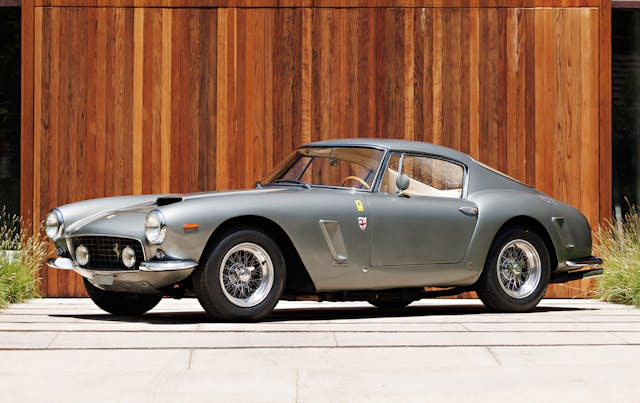
The successor to Ferrari’s 250 Tour de France (TdF) and the precursor to the 250 GTO, the 250 Short Wheelbase (SWB) competed at the peak of Ferrari’s dominance in international sports car racing. And in true GT fashion, it could be driven to the track, win, and then driven back home again. Barely 160 were built. They’re all special.
What this car, chassis 3507GT, lacks in race history it makes up for in originality. Sold new in Italy, it has only ever had four owners, has never been offered for public sale, and is almost entirely original.
Sparkling, show-winning restorations are great, but something is only original once, and a 60-plus-year-old Ferrari with mellowed original finishes and fasteners is arguably better. That’s why this car has a $9M–$11M estimate, which is just over the SWB’s condition #1 (Concours, or best-in-the-world) value in the Hagerty Price Guide.
1957 Jaguar XKSS

The term “race car for the road” gets tossed around way too often, both by automakers trying to sell you something and by auto writers running out of metaphors. But in the case of the Jaguar XKSS, the term really applies.
When Jaguar pulled back from factory racing in 1956, sales of its Le Mans-winning D-Type racing car ground to a halt. Unsold, expensive-to-build cars and parts littered the factory. What to do? Slap on some bumpers and a windshield then sell it for the street, of course! Jaguar had enough stock for 25 examples of its road-going D-Type, called the XKSS, but the infamous fire at Jaguar’s Browns Lane facility meant that just 16 were completed (Jaguar since finished those nine missing chassis numbers and sold them as XKSS “Continuations”). Most XKSSs sold to North America.
This car, chassis 707, was ordered new by an American racer who lost his life in another car prior to delivery, so #707 was sold to another owner in San Francisco instead. He kept it until 1973, after which it passed through several UK collectors, one of whom was able to snag the registration plate “JAG 1” for it. Just 25,535 miles show on the Smiths odometer. With the exception of the rear bulkhead, the chassis, suspension, and monocoque are all original, and the bonnet has been replaced.
Although it was born of the practical need to offload excess inventory, the XKSS has since become the most sought-after Jaguar production car. They tend to reside in long-term collector ownership and don’t trade hands publicly very often. In fact, the last real XKSS we saw at auction was in 2017, when chassis #716 failed to sell at an $11.9M high bid. More than six years later, this one has an estimate of $12M–$14M in Monterey.
2001 Ferrari 500 Maranello Prodrive
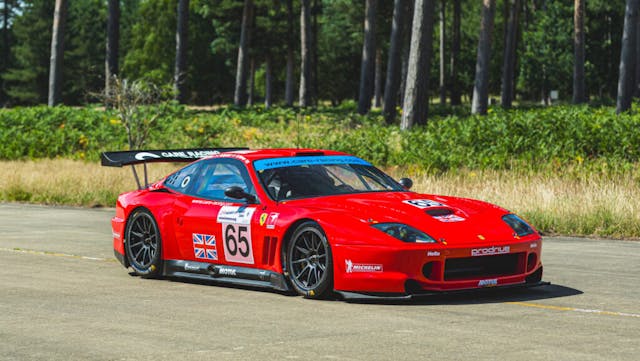
In the early 2000s, Ferrari was too busy steamrolling everybody in Formula 1 to care much about sports car racing, so many of the 550 “Maranello” race cars that took to the circuits back then weren’t actually prepared in Italy. The most successful of them came from British outfit Prodrive, which already had experience running title-winning teams in rallying and touring car racing.
In turning Ferrari’s V-12 coupe into a winner, Prodrive trimmed over 1000 pounds in weight, grew the engine, and reworked the suspension and body. All normal stuff in the course of building a race car, but Prodrive’s preparation and management were superb, and the car was a winner. The 2003 season was its high point, with the 550 GTS winning its class at Le Mans as well as securing multiple wins in the American Le Mans Series and the FIA GT championship.
Prodrive built ten 550 race cars in period, and this is the third. It won five races, took 14 podiums, and recorded 10 pole positions out of 34 starts. A second-place finish in the 2003 American Le Mans Series and third in the 2005 Le Mans Endurance Series are highlights on its resume, but it also ran at Le Mans five times in a row. According to RM Sotheby’s, that makes it “the single most-raced 12-cylinder Ferrari in the world’s most famous endurance motor race.” The 2004 race was its strongest finish, with rally master Colin McRae driving it to third in class.
The last 550 Prodrive to sell publicly, which arguably has an even better race history, sold for $4.29M in an online auction three years ago. But this one could bring twice as much in 2023, with a presale estimate of $8.0–$9.5M. At that level, it would only take a few extra bids to push it into eight figures.
1960 Ferrari 250 GT SWB California Spider
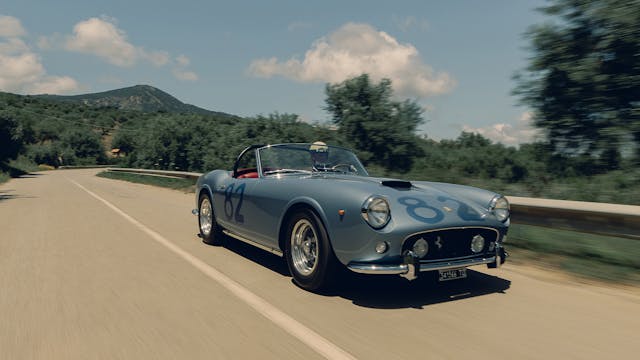
It was originally aimed at wealthy West Coast American buyers and today it’s mostly known for its eye-popping beauty and Ferris Bueller hijinks, but Ferrari’s 250 California Spider also took to the race track at top-level international events.
Cal Spiders come in several flavors—long wheelbase (LWB) or short wheelbase (SWB) with open headlights or closed headlights. This one is an SWB (more desirable) with open headlights (less desirable), but more important than its configuration is its history, which includes an exhibition on the Ferrari stand at the 1960 Turin Motor Show and a third in class at the Targa Florio in 1962. Represented as the second of the 56 SWB California Spiders built, it sold new with Blu Medio paint over red leather and was restored from 2013–16. RM Sotheby’s estimates it will bring from $9.5M to $11.5M.
1933 Bugatti Type 55 Roadster
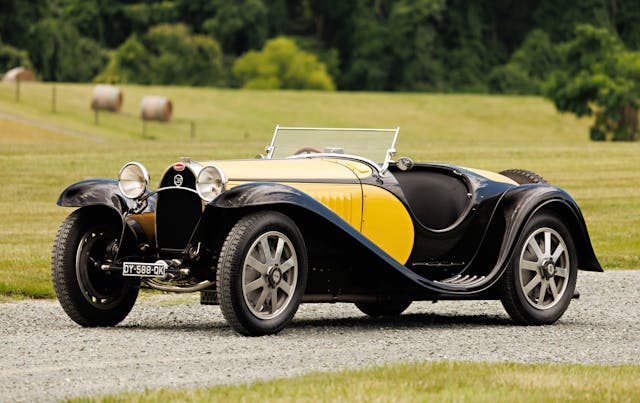
Nearly a fifth of this year’s Monterey consignments were built before World War II. Among these prewar prizes are Duesenbergs, Hispano-Suizas, Isotta Fraschinis, a Mercer Raceabout, and, of course, Bugattis. The most expensive of them is this Type 55.
Really an amalgamation of grand-prix car parts wrapped in Jean Bugatti’s lovely cutdown-door roadster body, Type 55 roadster production was extremely limited. Just 16 of the 38 total Type 55s built got roadster bodies from new. This one, chassis #55231, is represented as the first of three Type 55 Roadsters completed in 1933.
It sold new in Algeria and was put to use doing what Bugattis of the era did best—driving quickly. In 1935 it won the Bouzaréa Hill Climb near Algiers. It underwent refurbishment during the 1950s, but after its engine failed in 1960, it headed back to France. Ralph Lauren bought it in 1986, had it restored in England, and added it to his collection before selling it in 2003. At Pebble Beach, it could sell for $8.0M–$10M.
1964 Ferrari 250 LM
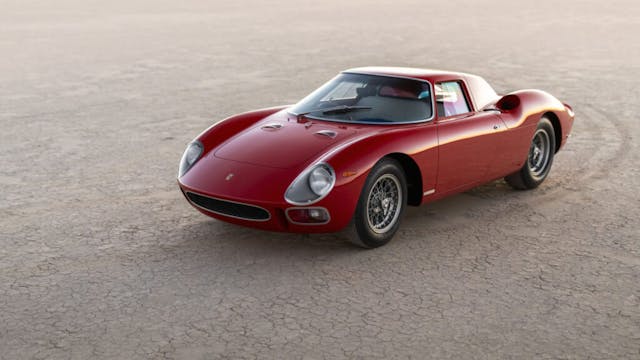
With Ferrari’s much-publicized win at this year’s 24 Hours of Le Mans, its first since 1965, it’s no big surprise that cars from the Scuderia’s glory days are coming out of the woodwork. Among them is the 250 LM, which was the last car wearing a Ferrari badge to win the 24-hour French classic.
Prior to 2023, the last 250 LM to come up for auction was in 2015 (chassis 6105, sold for $17.6M). This year, though, we’ve seen two of these mid-engined marvels at public sale. One of them sold in Paris just last month for $17.2M. That car had no competition history whatsoever, but the one on offer in Monterey does.
Represented as the 22nd of the 32 copies built, it was campaigned by British driver George Drummond, who racked up wins at Brands Hatch, Snetterton, and Silverstone. Drummond then enlisted Innes Ireland and Mike Hailwood to drive with him at Le Mans in 1966, but gearbox trouble took them out after 90 laps.
The car also raced in Austria and Africa before selling in 1968 to another Brit whose 250 LM had wrecked badly at the Targa Florio. He swapped in the engine and gearbox from the wrecked LM into this car, painted it dark blue with a white stripe, and entered it at Le Mans. On the 99th lap, gearbox trouble struck again and took the car out of the race. It has since passed through collections in the U.S. and Japan and has been restored twice, the most recent of which took place at the Ferrari factory from 2018 to 2021. It has an $18M–$20M estimate for Monterey.
1967 Ferrari 412 P

If it sells, the Ferrari 412 P consigned by Bonhams could be the most expensive auction car of 2023.
Built at the height of the Ford vs. Ferrari slugfest in the mid-1960s, the 412 P was essentially a customer version of Ferrari’s latest factory prototypes—the 330 P3 and P4. This one’s best major result was a third-place finish in its debut race at Spa in 1967 with Lucien Bianchi and Richard Attwood on driving duty. At Le Mans, Attwood and Piers Courage ran just outside the top 10 until retiring with oil pump failure. Then, its seventh-place finish at Brands Hatch yielded valuable points to help Ferrari push to the top of that year’s World Sportscar Championship. A string of non-championship races in Europe and Africa followed, then its sold to a wealthy West Coast American who was either crazy enough or cool enough to modify it for street use. He then sold it to another American for 10 grand. $10,000!
But that price is of no relevance whatsoever in 2023. What in the ’70s may have just been a finnicky, old, obsolete race car is now eight-figure royalty for a few reasons. First, just look at it. Then, there’s the rarity: Just four 412 Ps were built, and total production of the 412 P/330 P3/330 P4 family numbers less than a dozen. And even though a later 312 PB from 1972 brought €12,042,500 at auction this year, earlier P-series cars just don’t pop up for sale. One of the P4s cut up for Can-Am racing in period was a no-sale at a €7,250,000 high bid way back in 2009. To find an actual public sale we have to turn the clock back even further, to 2000, when Christie’s got $5.6M for a P3 in Pebble Beach. Even those numbers, though, aren’t all that informative in today’s market and there are more recent comps to look at. This 412 P’s contemporary—a more common, slower, and not quite as beautiful 250 LM with no race history—just sold for $17M. It’s not a stretch to assume that the 412 P will bring significantly more.
***
Check out the Hagerty Media homepage so you don’t miss a single story, or better yet, bookmark it. To get our best stories delivered right to your inbox, subscribe to our newsletters.

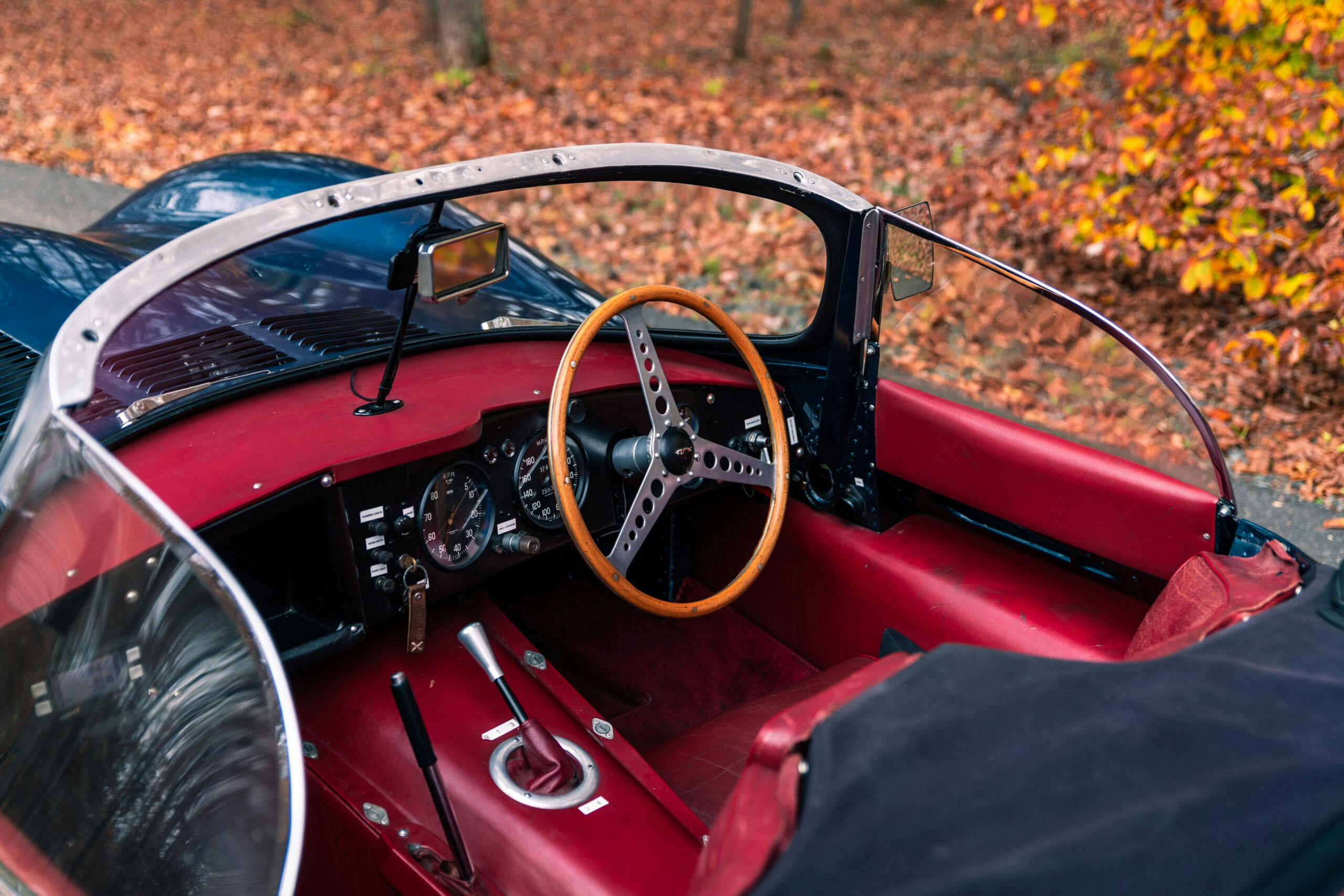
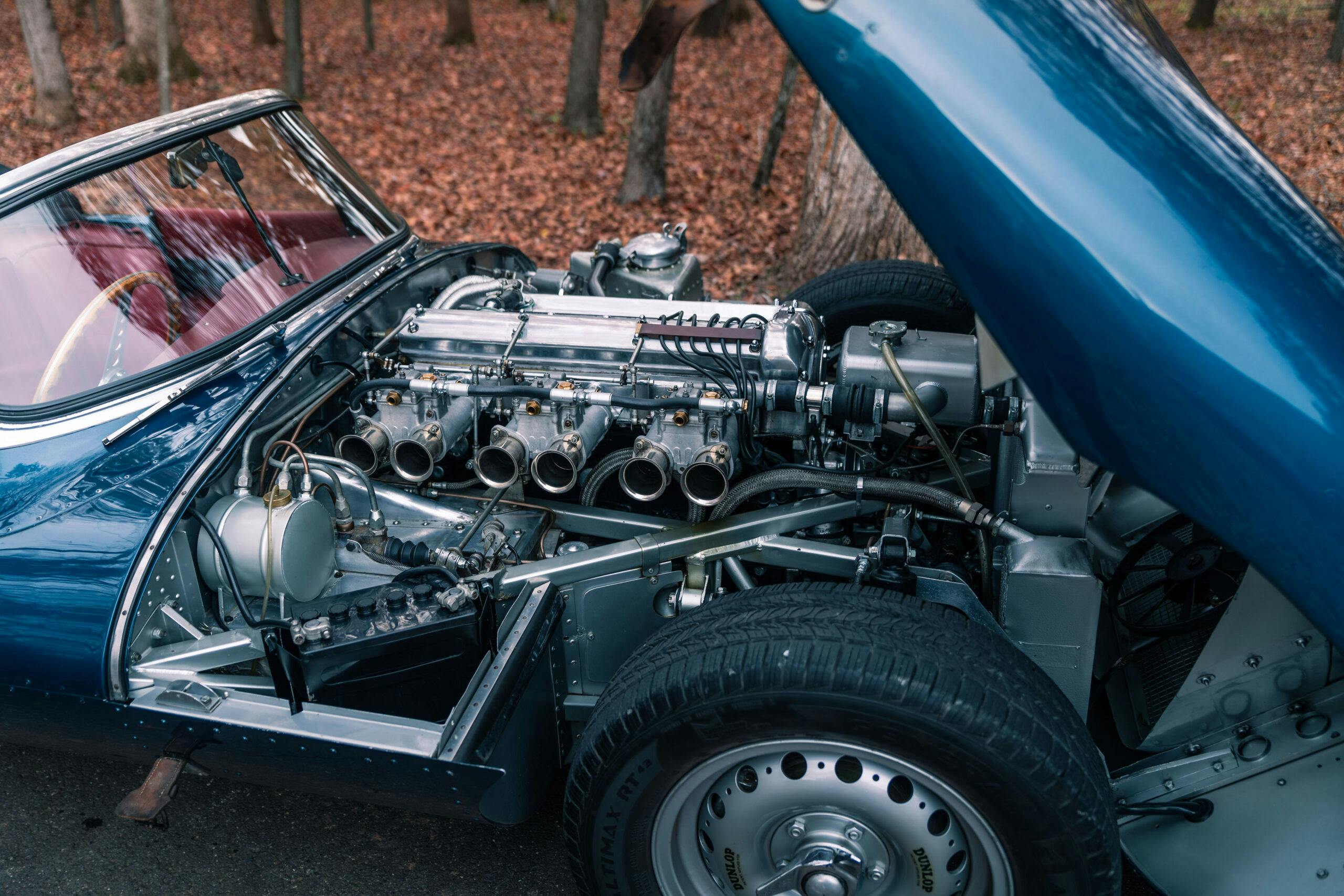



Money no object, the 1962 Ferrari 250 GT SWB would be my pick!
Andrew, at $400 a night at Motel 6, and $1,000 tickets to be held behind the ropes with all the other riffraff. Why go and subject your self to such insults? And you and you team could have saved the rate payers the five or six digit travel expenses incurred 🤣🤣🤣
You have to be an absolute monster to pay 8 digits for a car. A rough (and conservative) calculation yields the delta between a half million dollar car and 8 digits as enough money to save over 1700 lives. This sort of behavior is bringing the pitchforks out.
Yeah, that’s the long and the short of it, but the person paying 8 figures for a car doesn’t recognize the masses. Albeit the masses that he/she accumulates their fortune from (see Bezos, etc). Income disparity exhibit C. A; property B; yachts D; art. Etc etc. I love all of these terrific triumphs of design and technology, but even if I “could” I wouldn’t, because as sad as it is to say, it’s another example of humanities decline and a glaring separation of the “haves” and “have nots”
Well stated Zach.
But people pay huge amounts for a lot of things.
Nobody NEEDS a $20 million mansion in a trendy enclave, no one needs $500k wristwatches or $10-20 million yachts and bizjets.
Even a lot of celery activists and politicians have seriously nice stuff, while building their “brand” about caring for the little folks. So I don’t think some guy who has worked hard…and or gotten lucky…and nuts a old Ferrari is enough to prompt another storming of the Bastille.
What?!
How do you know that the buyer of an 8 figure car does not also donate 8 figures to noble and charitable causes? What percent of your income or wealth do you donate?
Michael,
Fair question. I can honestly say that my income to charitable donation ratio is likely higher than most multi-million-dollar car/boat/house buyer…Current case in point; Bezos just pledged to donate $100,000,000 to aid in the relief of the devastation in Hawaii. That is A LOT OF MONEY without a doubt, but when you consider it’s only 1/5 the cost of his LATEST boat build, it adds up to pocket change (maybe couch cushions too) for him. I’m also not using my donations as a tax shelter write off in effort to “keep hold” of as much as possible either…. I’m sorry, this thread has gone down a rabbit hole with no bottom and I apologize for even lighting the candle. I’m not demonizing the inevitable new owners of all these wonderful cars being sold, it’s their money to spend as they wish, but a car auction of any scale isn’t a place I’d go looking for a true philanthropist.
Looks like I need to get a few more dollars out of my 401K !!!
Cars are a place to park money, Ever thought how awkward it would be to drive a fine painting around,
Notce there are no Fords or Chevies. Everybody already has one of those, Besides these cars are traded amoungst collectors (many times for tax reasons)
The Ferrari 250 variants are just so nice and will command big money.
Instead of belaboring the potential auction value of these machines, which is not very meaningful to most of us, why can’t you spend your efforts on in depth reporting of their history, attributes and what it’s like in detail to drive them over long distances? That would be far more valuable.
Thank you! I want to see the detailed craftsmanship. Learn the nuisances to improve my own skills and build ideas. Oh, well, have to settle for the digital images from a far and behind the ropes scene.
I thought he did a pretty good job of reporting on their history, attributes in a short article. Maybe you don’t take any interest in the potential auction value of these machines but I do so please don’t include me in your statement about what is not very meaningful to most of us. Thanks
Not a Chevy or ford among them! $10m sale is fine if some people got paid to build it…like a new $10m mansion would yield. $10m for a fifty year old car is unabashed opulence that only the seller gets any money for it.
10 million buys a lot of Chevies. And they can actually be driven. And repaired. And driven some more. And most regular folks, who make up 98.5% of the population have absolutely no idea what those 7 cars even are. Kit cars on VW chassis is my guess. Theirs too. Only 10 million a copy.
What, no AMC Pacers. Even if I could afford one of those “ferun” cars, I wouldn’t by one.
If I had it my way, that mid engine 250 LM would be top of my choice. Only for the reason that (old or new for that matter)racing cars need to be driven the way they were intended .
Not stored as a trophy , but driven hard. Make that V12 earn its living.
I say each to his own…
We are well-off, but by the standards of someone spending $10 million, or more for a car, we’re pissants. I like to attend car shows and to see unusual cars (into bikes too) of which I have no likely plans for ownership. If the owner is someone who’s worked on the car or bike, and I can ask some informed questions for which he/she has answers, so much the better. I’m less-impressed by someone whose main involvement is, “I wrote a really-large check for this!” but who did no work, no parts searching, no investigations into its provenance. They didn’t skin their knuckles a few times, or go to bed with still a bit of hard to reach grease under their nails. Did they buy a new tool to work on it? I have more in-common with those people.
The people who wear their ‘social injustice’ orientation while coming on here to complain, because of expensive vehicles, you’ve used your First Amendment right to complain, why do you even bother coming here to read/write? Are you going to wrap it up to go locate an H2 to throw paint onto it?
I’ve been reading the car magazines since Car and Driver was Sports Cars Illustrated. I’ve been in attendance at F1 races for almost 60 years now, but when F1 came to Miami, and I could have taken a local bus to the racetrack, I didn’t, because they want $1,400 for a multi-day pass, and as they say in microeconomics there is “a willingness to pay” for ‘a bundle,’ and no, I’m not-willing to pay that.
I’ve never bid on a collector car (or bike) at auction, I’ve never attended the big ones that get televised. I’ll continue to choose what my involvement will be, whether it’s buying something to work upon, an event to attend, or whatever strikes my fancy in the world of transportation.
Envy is one of the seven deadly sins, and so unbecoming.
Well Said 🙂